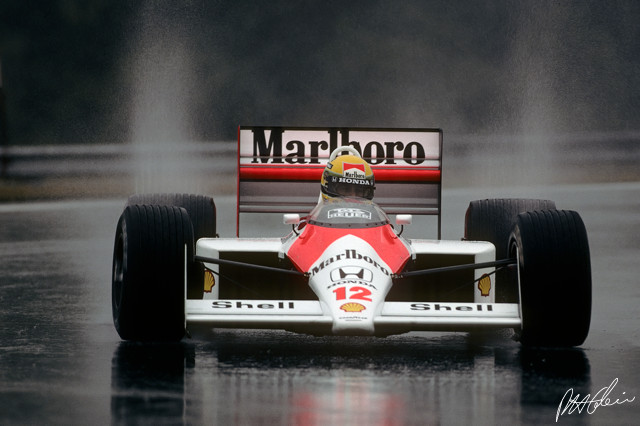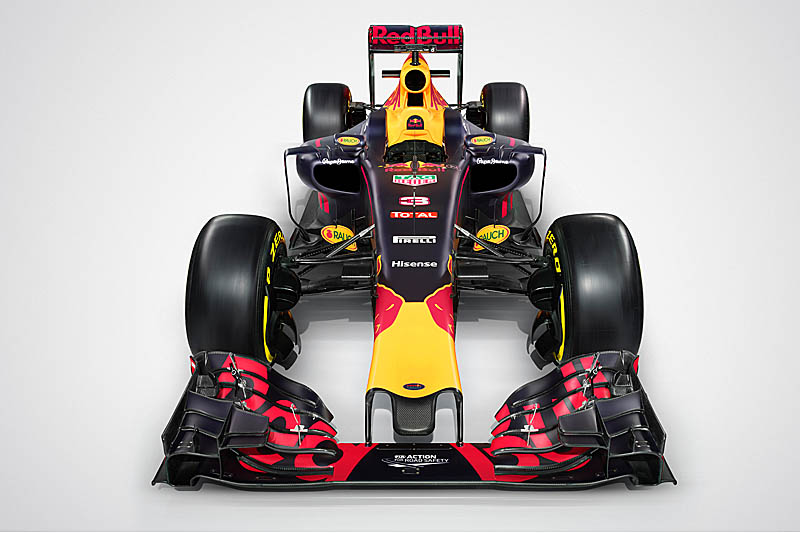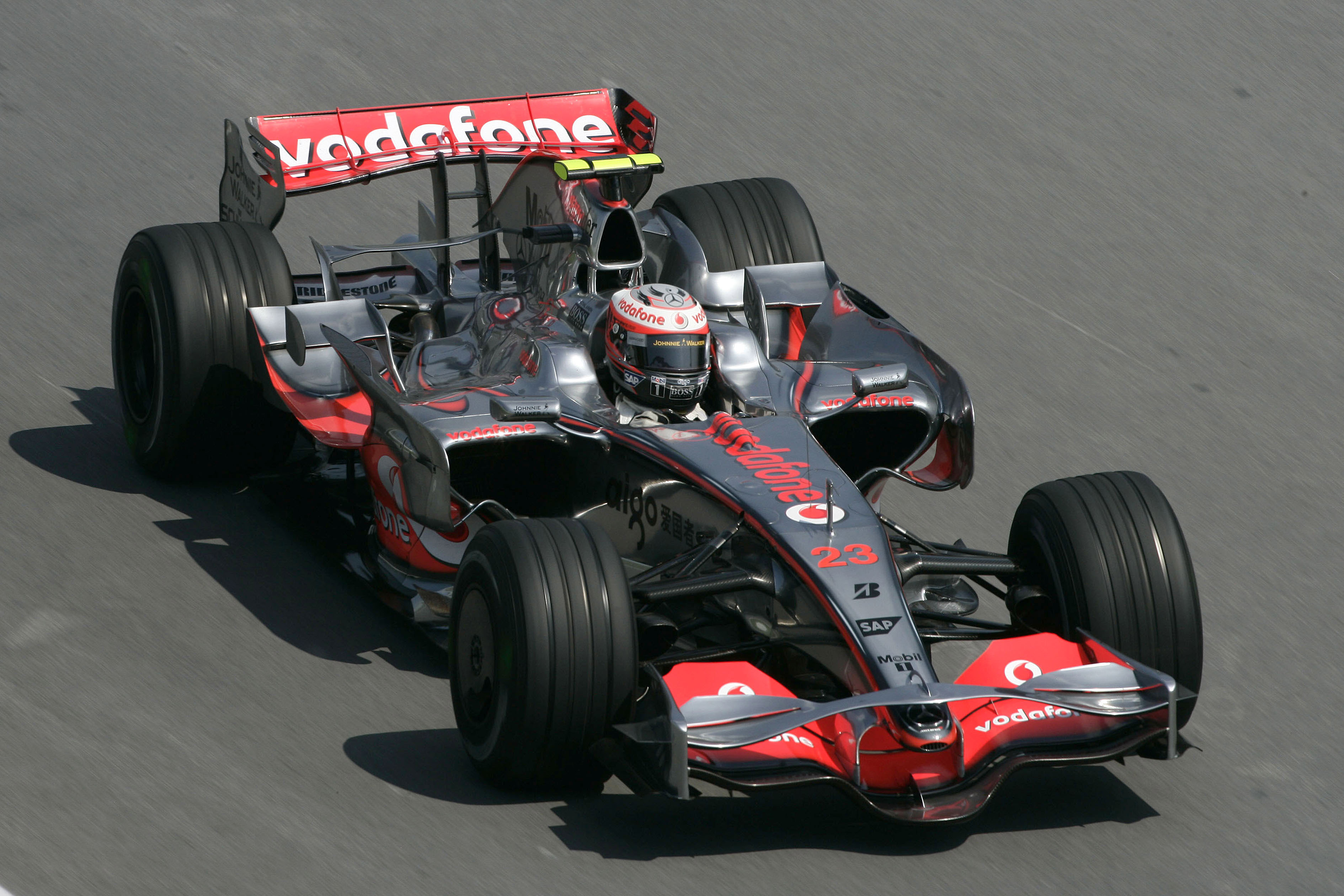- Login or Register
No account yet? Sign up
Hey that's trademarked! I'll first have to see some royalties before that gets my stamp. And even then it only gets onto the car if it includes a spastic picture of me with an enlightening quote as "one turbof1 anal all day, keeps the maldonado from the back away"DiogoBrand wrote:I think it should also be mandatory to write "Turbo" on the sides of the cars. This would make them so much cooler!Paul wrote:Obligatory go-faster stripes next on the agenda!
mrluke wrote: I fully appreciate that aero devices are dependent upon the "quality" of the air they receive. However I dont think that there is any evidence that this is the reason modern F1 has no overtaking.
If the trouble with overtaking is purely down to how much turbulence a car creates, then it should be pretty easy to identify which of the current cars makes the most "dirty" air?
My suggestion is that actually the most difficult car to overtake is that of your team mate, you both have exactly the same strengths and weaknesses in exactly the same places, when this is combined with the slight reduction of your cars aero performance the net result is that it is very difficult to pass.
Due to the ever tightening regulations, the current crop of cars are almost identical, there is very little variation between them, they all have pretty much the same downforce, drag and power and they all weigh the same.
If we go back to say the "good old days" we had a mixture of engine layouts, some turbo, some NA, all making power in different ways, some being better in the "twisties" and others better on the straights. This gave differentiation to the cars and creates overtaking opportunities.
The best racing is between 2 cars that set an identical lap time but have completely opposite strengths.
I agree with what you say about performance variation helping with overtaking in the past. I disagree that is should be easy to identify which cars produce more turbulence than others, because the performance between the cars is too close.turbof1 wrote: That's the issue in a nut shell. The issue of dirty air has always existed. Also in the 80's. You just had more overtaking because car performance and car reliability had a much bigger variance across the grid.
Turbulent flow is definitely a part of the story, but is in absolute terms not an any bigger issue then it was in the past. Convergence is.
But anyway, how did we get there from the topic "design"?
The cars make "similar" levels of downforce to that which was achieved in the 80s.Blaze1 wrote: I disagree that wake turbulence is not a significant contributor to the lack of overtaking in contemporary F1, the problem is appreciably worse today than it was in the 80's. Right now a chasing car that is of a similar pace to the car ahead will struggle to stay within 1 of that car. In the 80's cars could run much closer together than today. Right now a chasing car can be a second a lap quicker than a car ahead, plus have access to DRS and still struggle to get close enough to pass. The 1 second difference, plus DRS should be more than enough of a performance differentiator and certainly significantly more than was required to pass in the 80's, yet today it is not enough.
One of the reasons is front grip from the tyres , as todays cars loose too much front grip in the corners when they follow another car. Now as a result of that we have the new rules which give us wider tyres next year, but the concern is...with the increase of the total DF levels next year and therefore more turbulence for the following car, it will most probably ruin the effect of the wider front tyre so it remains to be seen how the racing will look like next year. Also in the 80's there were a lot of components that were not standardized and by that the room of difference in performance was bigger therefore the chance of overtake was greater.mrluke wrote:The cars make "similar" levels of downforce to that which was achieved in the 80s.Blaze1 wrote: I disagree that wake turbulence is not a significant contributor to the lack of overtaking in contemporary F1, the problem is appreciably worse today than it was in the 80's. Right now a chasing car that is of a similar pace to the car ahead will struggle to stay within 1 of that car. In the 80's cars could run much closer together than today. Right now a chasing car can be a second a lap quicker than a car ahead, plus have access to DRS and still struggle to get close enough to pass. The 1 second difference, plus DRS should be more than enough of a performance differentiator and certainly significantly more than was required to pass in the 80's, yet today it is not enough.
Why is it that in the 80s this downforce had "no" impact upon the following car yet today it prevents them getting within 1 second (8 car lengths?).
The older cars created visibly much more drag and therefore turbulence yet this did not seem to cause a problem at all, why?
Highlighted the core of my argument proposed in my original post.bauc wrote: One of the reasons is front grip from the tyres , as todays cars loose too much front grip in the corners when they follow another car. Now as a result of that we have the new rules which give us wider tyres next year, but the concern is...with the increase of the total DF levels next year and therefore more turbulence for the following car, it will most probably ruin the effect of the wider front tyre so it remains to be seen how the racing will look like next year. Also in the 80's there were a lot of components that were not standardized and by that the room of difference in performance was bigger therefore the chance of overtake was greater.
And lets face it, the human factor played a big role as well. In the old days most of the drivers leaned on their talent only ...they were not athletes like today's F1 drivers ...plus those cars where a lot heavier to drive so there is one more reason for difference in performance as well among many other.
Downforce is the not the problem. A quick comparison of the front of the cars gives an idea of what the problem is. There is way to much reliance on the complicated front end of the car to get a DECENT front bite. Unlike the old generation cars, when the current generation cars are devoid of good air flow (due to turbulence), the front becomes a GREAT DEAL ineffective. The current cars stand to lose WAY TOO MUCH compared to those old cars. You must have heard drivers complain of losing the feel for the front of the car while following, which is natural result of such complex front end of the current cars. Unless, FIA comes down hard on those complicated front wings, the show isn't going to improve. With next year's cars becoming faster, the length of DRS zones would also become a problem as the cars fire away in those zones faster. I won't be surprised if we don't see as many DRS overtakes from next year.mrluke wrote:The cars make "similar" levels of downforce to that which was achieved in the 80s.Blaze1 wrote: I disagree that wake turbulence is not a significant contributor to the lack of overtaking in contemporary F1, the problem is appreciably worse today than it was in the 80's. Right now a chasing car that is of a similar pace to the car ahead will struggle to stay within 1 of that car. In the 80's cars could run much closer together than today. Right now a chasing car can be a second a lap quicker than a car ahead, plus have access to DRS and still struggle to get close enough to pass. The 1 second difference, plus DRS should be more than enough of a performance differentiator and certainly significantly more than was required to pass in the 80's, yet today it is not enough.
Why is it that in the 80s this downforce had "no" impact upon the following car yet today it prevents them getting within 1 second (8 car lengths?).
The older cars created visibly much more drag and therefore turbulence yet this did not seem to cause a problem at all, why?




Nope. A lot of renders have an elongated "normal" nose, but fact is the noses will looke quite similar next year, if not perhaps even more extreme: the space between the chassis monocoque and the neutral section will extent (because the neutral section will be brought more forward to accomodate the delta shape), meaning you'll get more room to stuff crash structure into. The last couple of years teams have reached the limit of meeting the the crash tests while still having an uncompromising nos cone regarding aero. That will become easier next year.Shrieker wrote:I thought we were finally getting rid of those pesky thumbs ?
How is that, GP2 cars have regular/decent noses and only F1 cars have such ugly noses?turbof1 wrote:Nope. A lot of renders have an elongated "normal" nose, but fact is the noses will looke quite similar next year, if not perhaps even more extreme: the space between the chassis monocoque and the neutral section will extent (because the neutral section will be brought more forward to accomodate the delta shape), meaning you'll get more room to stuff crash structure into. The last couple of years teams have reached the limit of meeting the the crash tests while still having an uncompromising nos cone regarding aero. That will become easier next year.Shrieker wrote:I thought we were finally getting rid of those pesky thumbs ?


Like Paul said, that's a spec series. Cars are being made by Dallara and delivered to the teams with only very limited setup options.GPR-A wrote:How is that, GP2 cars have regular/decent noses and only F1 cars have such ugly noses?turbof1 wrote:Nope. A lot of renders have an elongated "normal" nose, but fact is the noses will looke quite similar next year, if not perhaps even more extreme: the space between the chassis monocoque and the neutral section will extent (because the neutral section will be brought more forward to accomodate the delta shape), meaning you'll get more room to stuff crash structure into. The last couple of years teams have reached the limit of meeting the the crash tests while still having an uncompromising nos cone regarding aero. That will become easier next year.Shrieker wrote:I thought we were finally getting rid of those pesky thumbs ?
http://media.crash.net/original/AU1392204.jpg



